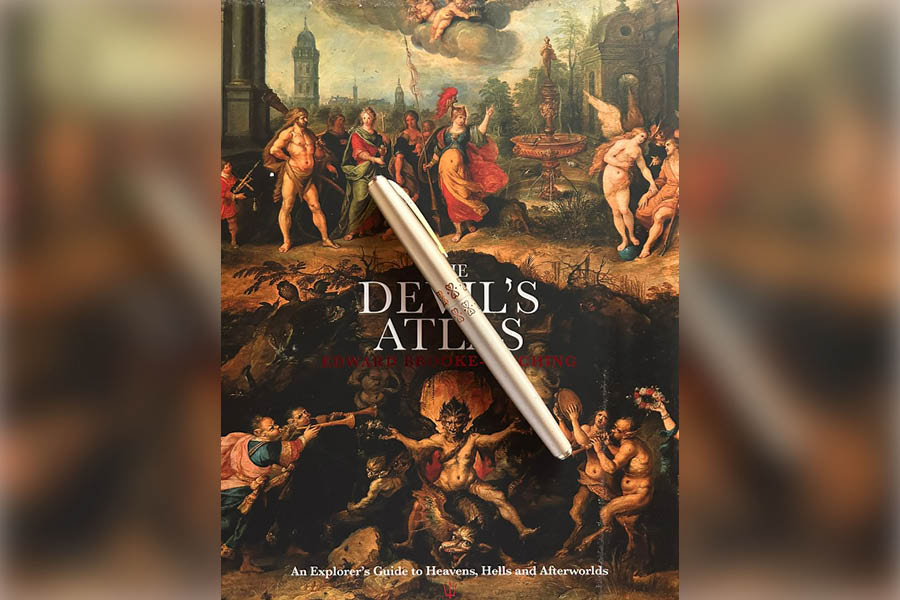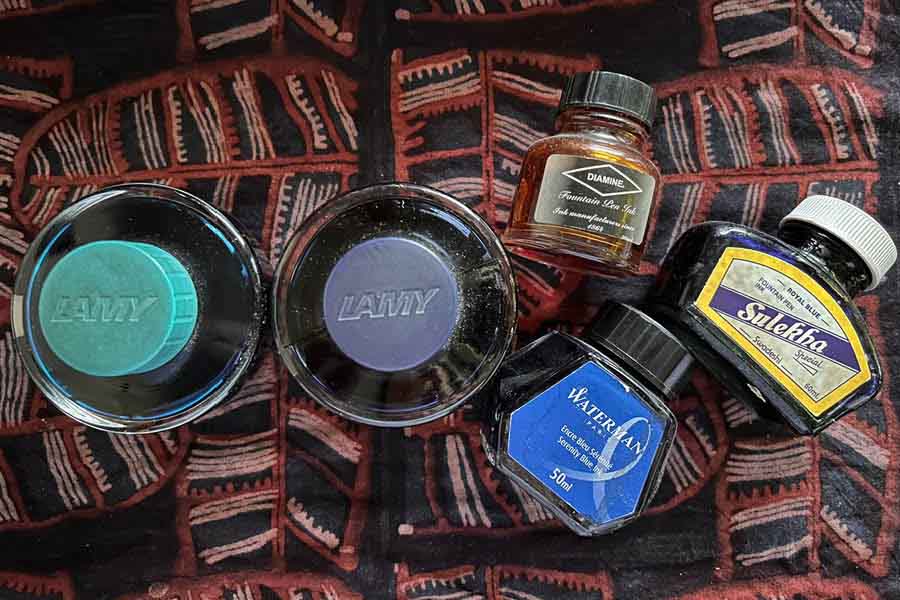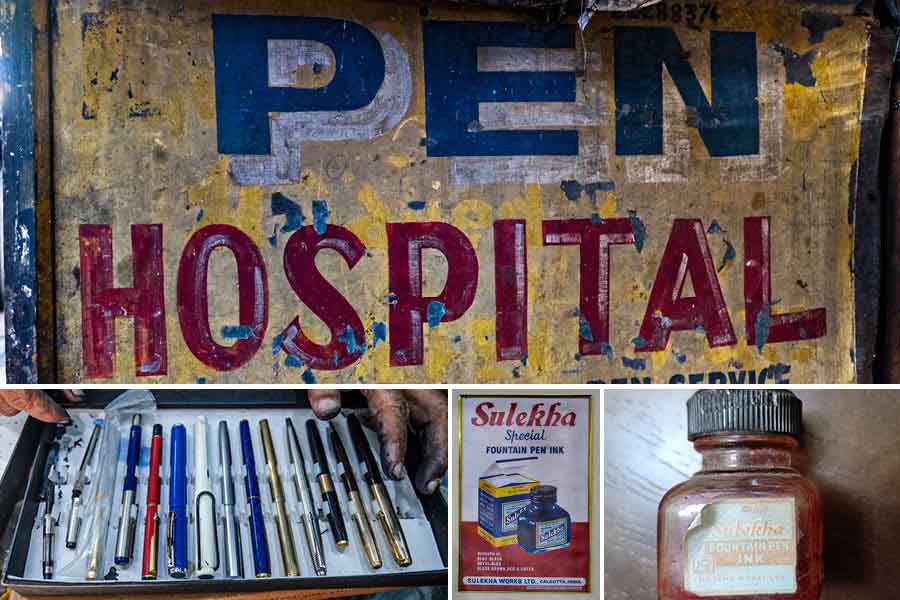My first fountain pen had a bottle green body and golden cap, gifted by my father when I was in Class II to write letters to my grandparents. The first try was in my journal, and I fell in love. It became a habit to save up pocket money and add more fountain pens to my collection.
I grew up in Tripura and then in small mofussil towns of Murshidabad and there fountain pens were available not only in stationery shops but also in some grocery shops! Maroon body and golden cap, black body and silver cap, sea green body and golden cap — fountain pens of myriad colours were gradually added to my collection.
With fountain pens came the ink pots. First a turquoise blue bottle and a royal blue bottle. Later, red and green were added to the collection but turquoise blue remained my favourite. Fountain pen education continued at home as I learnt about the various types of nibs — round, flex, and the different sizes they came in — fine, extra fine, medium or broad.
Rendezvous with art and fountain pens

Three fountain pens that are almost regularly used Pooja Mitra
As I grew up, learning how to scribble-paint with fountain pens became a hobby too. Landscapes and abstract also nurtured my love for calligraphy, and eventually to try writing phrases and quotes from Bengali and English literature in my journal. It is the love for fountain pens that made me replicate alpona — an art form intrinsic to Bengal’s cultural heritage — on paper.
It is fascinating to know the several types of metals used to make the nibs. While stainless steel is common, learning the Periodic Table and finding how iridium or titanium is also used to make the nibs of my favourite pen was a discovery.

An heirloom wooden box, inherited from my paternal grandmother’s mother, and a Sheaffer fountain — a gift from a friend on our wedding Pooja Mitra
Practising cursive handwriting on white sheets in a straight line was a holiday homework for many years, and that is where, on the rough sheets on lazy summer or winter afternoons, trying out the various nibs would happen. Fountain pens, as enthusiasts would know, have italic, flex and fude (a nib that is bent on purpose and that unique shape is what allows it to create a line like no other nib) nibs to name a few.
Growing up in a household where Rabindrasangeet, Indian and Western classical instrumental music were part of daily life and around a classical singer mother, music notations in books were no stranger. And that is when the music nib entered — never used but fascinating to know there is a special nib to write music notations.
Loving care for pens so dear

A special gift to the husband, a fountain pen lover too, almost a decade ago Pooja Mitra
While building a collection is great, it is also an added task that has to be performed periodically and meticulously. Fountain pens are delicate in nature. The slightest force can lead a nib to leak or even to break, cartridges to leak or there could be fine cracks on the body of the pen. Hence, a careful inspection and putting the pens at a designated spot in a nurtured set-up is important. I have tried putting them on pen stands and in pencil boxes but I find putting them in a wooden box with a layer of velvet at the bottom safer. The sturdy embrace and the soft base keeps the pens safer, is a personal opinion.
Equally crucial is cleaning the fountain pens. I have realised, keeping the steps simple and maintaining a routine to clean them keeps the pens in a better condition. Married to a fountain pen head, we follow a simple routine: the first step is to disassemble the parts of the pen — the bottom, the ink filler, the rubber, the cap.

A fountain pen ink sketch by artist Karishma Siddique Roy, and two pens — A Lamy and a Montex that are not used as regularly Pooja Mitra
The next step is to take two deep bowls with lukewarm water in them, and add vinegar in one. The metal parts of the pen go in the bowl with vinegar and water. The rubber part goes in the bowl without vinegar. They are soaked based on the extent of stain and usage. If a pen is being used fairly regularly, soaking a day seems enough. The ones that are not used often are soaked for up to three days.
Once the pens have completed the soaking stage, the water in the bowls are disposed of, and the parts of the pens are gently washed under running water. Keeping the flow of water to a medium is important, harsh flow can damage the parts, especially the nib and the rubber. Then comes the penultimate stage where the parts are placed on a cotton cloth and air-dried. Once every part of a pen is dry, it is refilled with ink. Rinsing thoroughly and gently while changing ink is another important step that I try not to miss, especially if the inks are of two different colour palettes.

Few ink pots that remain to be a favourite
Using the right ink is equally important for the health of the fountain pens. I prefer Sulekha, Waterman and Lamy ink because they are smooth, and I have been using these since the time I started using fountain pens.
Using fountain pens on various kinds of papers has made me realise, the smoother the paper, the better for the nib. Rough papers tend to take away the fine-ness of the nibs. Pressing hard or too tight a grip while writing affects the nib and the cartridge too — guilty as charged, many angry letters have resulted in pens with shorter life.
There are a few fountain pens I dream about — a Namiki Yukari Royale, a Caran d’Ache special, or everything made by Sheaffer, Montblanc, Lamy and Pelican. Building a gadget section for the pens is a wish too, with an ultrasonic cleaner.
For now, keeping up the pen-hunting passion and adding more inks to the collection seems zen enough.




